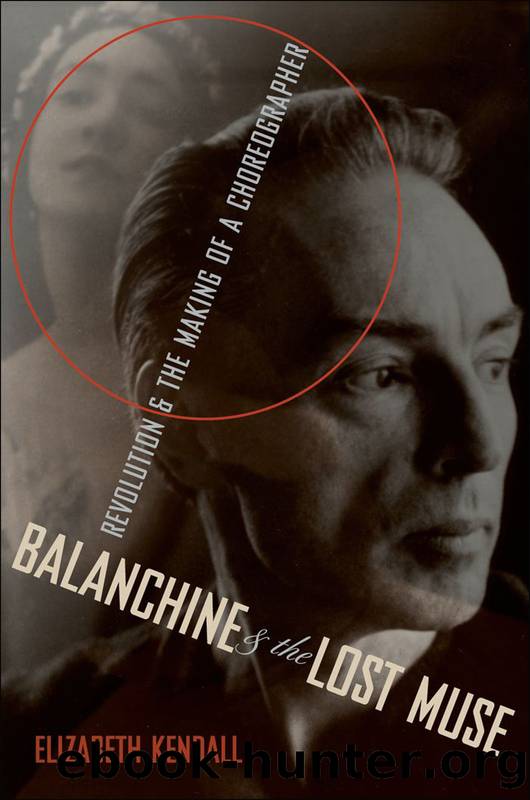Balanchine & the Lost Muse by Elizabeth Kendall;

Author:Elizabeth Kendall;
Language: eng
Format: epub
Publisher: OUP Premium
Published: 2013-01-15T00:00:00+00:00
And so began the astonishing New Economic Policy of the 1920s, the NEP, which was to last for another eight years before Stalin shut it down. What Lenin imagined was a simple exchange: peasants would sell their grain in the towns and receive the manufactured goods they so desperately needed. But there werenât any such goods. What transpired instead was a massive shift in priorities. Earlier visions of universal social welfare gave way 1921 to a new slogan: productivity at all costs. That meant increased factory output and decreased state spending. Failing state enterprises were leased out to private owners, successful ones held to account, workers dismissed from the swollen state bureaucracy, and rations no longer handed out at workplaces. A massive famine struck the Volga River region that summer, but in the cities conditions slowly improved. The once furtive black market merged with the new grain exchange. Bakeries cropped up, then grocery stores, commission stores selling hoarded valuables, repair shops, factories, even restaurants, and with them the old villains of capitalism, âprofiteers, currency traffickers, speculators, pawn shops, swindlers, shady intermediaries and other types of sharks â¦â as one Bolshevik-minded observer put it.18 The Bolsheviks had to hustle up new laws to keep pace. The NEP was an admission of defeat, but Lenin used his best mental acrobatics to argue the opposite: that regenerating the bourgeoisie would save socialism.19 Heâd effectively halted the revolution to insert the middle-class takeover that Marx had mandated before proletarian rule. The Partyâs idealistic wing reacted with shock and disbelief, and the arts with fear. Now instead of searching for ways to reach workers, artists would have to search for profits.
For Georges, Lidochka, and their classmates, the NEPâs coming was miraculous and daunting. Looking out from their cave in their ex-imperial school, where theyâd been freezing, hungry, and dirty but fused together in a primitive tribal warmth, they saw lights coming on, window glass returning to windows. They saw, as Schwezoff put it, âalmost a resurrection,â as if their city was rousing itself to welcome them into it.20 And yet, revived urban life posed problems not only financialâdancers wouldnât be the ones making moneyâbut psychological. Alone without each other, how would they fare? Their May 1921 graduation concert may have reflected the confusion. Lidochka got sick with a high fever. Instead of calling the concert off, Oblakov made the last-minute decision to replace her in Javotte with her classmate, Nina Vdovina. Vdovina had been on the Estrada music-hall stage before coming to the school; she could learn fast. Balanchivadze taught her the role and partnered herâhis first experience of quick staging. Nor was Lidochkaâs illness the eveningâs only mishap: Mikhailovâs partner for a Coppélia pas de deux, Lyubov Platonova, fainted in the wings. He didnât get to dance at all.
Javotte was a hit, even with substitutions. But everyone was sorry for Lidochka. The next day a âsmall delegation of her large circle of friends,â as Mikhailov put it, went to her familyâs new apartment nearby
Download
This site does not store any files on its server. We only index and link to content provided by other sites. Please contact the content providers to delete copyright contents if any and email us, we'll remove relevant links or contents immediately.
| Actors & Entertainers | Artists, Architects & Photographers |
| Authors | Composers & Musicians |
| Dancers | Movie Directors |
| Television Performers | Theatre |
Cecilia; Or, Memoirs of an Heiress — Volume 3 by Fanny Burney(30954)
Cecilia; Or, Memoirs of an Heiress — Volume 2 by Fanny Burney(30910)
Fanny Burney by Claire Harman(25796)
We're Going to Need More Wine by Gabrielle Union(18090)
Plagued by Fire by Paul Hendrickson(16645)
Cat's cradle by Kurt Vonnegut(13906)
Bombshells: Glamour Girls of a Lifetime by Sullivan Steve(13122)
All the Missing Girls by Megan Miranda(12787)
Leonardo da Vinci by Walter Isaacson(11928)
4 3 2 1: A Novel by Paul Auster(11080)
Adultolescence by Gabbie Hanna(8156)
The remains of the day by Kazuo Ishiguro(7584)
Note to Self by Connor Franta(7034)
Diary of a Player by Brad Paisley(6872)
Giovanni's Room by James Baldwin(5901)
What Does This Button Do? by Bruce Dickinson(5539)
Recovery by Russell Brand(4575)
Born a Crime by Trevor Noah(4532)
The Kite Runner by Khaled Hosseini(4489)
